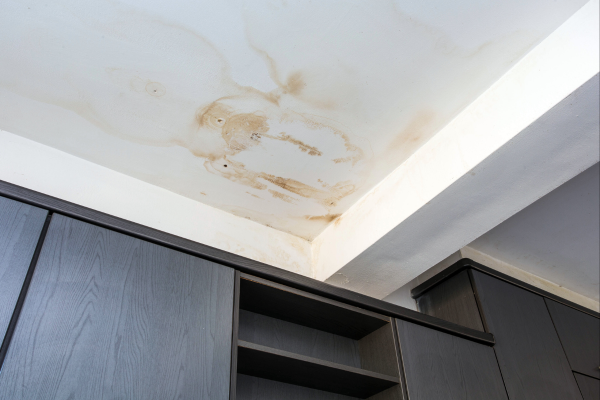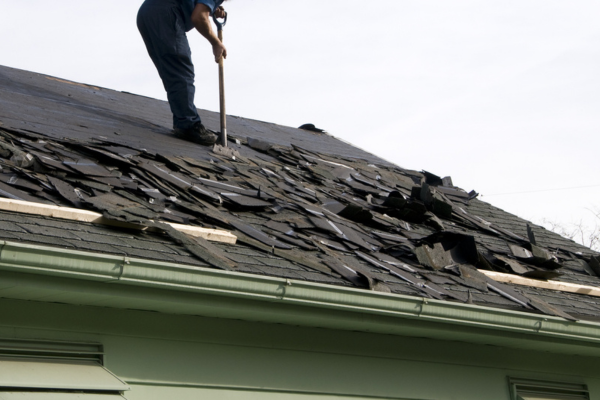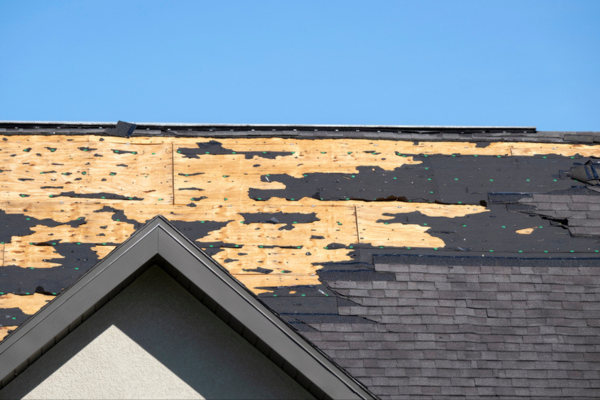For a concerned homeowner, the repair of water damage on the roof is necessary to prevent expensive structural damages and mold infestation. If roof leakages are not treated in a timely manner, the results can be serious, turning your homes into an unsafe place to stay in. In this guide, we go through all that you should know in identifying and repairing or preventing water damage due to roof leakages, and some tips on the best materials for repairs, how to manage costs related to the repair, and how to maintain a long-term leak-free roof.
1. First Sign of Leak On-Spot Damage Control

The moment you notice the trace of a leak, timely action can save further damages and help you protect your home to a great extent. Here are on-the-spot steps to assist in preventing further damages due to the leak before repairs can be carried out:
- Place Buckets or Containers: Place buckets under any visible drips to collect water and protect your flooring.
- Move Furniture and Values: Move any furniture, rugs, or electronics that are near the leak, away from it.
- Larger Leaks: If a big leak is found, tarp the roof over the area of leakage to minimize continuance of water intrusion until a repair can be made.
- Dry Out Wet Areas: Towel-dry wet spots visible and, if possible, set up fans to reduce moisture.
Warning Signs to Watch For
Early identification of these signs might offer an opportunity for intervention prior to further deterioration of the problem:
- Ceiling Stains: Most commonly, a roof leak would be identified with water discolorations or rings on the ceiling.
- Peeling Paint or Wallpaper: Paint and wallpaper often bubble and peel due to moisture.
- Mildew or Musty Smell: These are often the prevailing scent indicating water damage that is often hidden from view.
- Dripping or Water Puddles: Obvious dripping is for sure a sign, but small water puddles near walls also can indicate a slow leak.
Why Fast Action is Critical
Fast response to any leak is vital for preventing catastrophic structural and financial damage:
- Prevent Mold Growth: A moist-laden environment breeds mold and mildew, a serious health hazard that can be costly to remediate.
- Minimize Structural Damage: Continuous leaks can damage the drywall and flooring, and even weaken the roof structure, which will eventually involve more extensive repairs.
- Reduce Repair Costs: Early action will avoid larger repairs, which are both more expensive and disrupting.
2. Locating and Fixing a Roof Leak

Safety Performing of Roof Inspection
Examining your roof for leakage requires a careful plan for making the operation safe and effective. Here are some safety tips when inspecting your roof:
- Wear Proper Safety Gears: slip-resistant shoes and harness, if necessary can prevent falls.
- Have a Copartner: there is someone supporting you on the ground and therefore helps boost safety.
- Choose the Right Conditions: Check your roof on a day that is not wet and overcast to minimize risks.
- Essential Tools: A flashlight will be helpful in dark areas, and binoculars will let you see those places that are not easy to reach from a distance.
Most Common Places of Roof Leaks
There are some other areas in the roof that are highly susceptible to leakage. Give extra heed to the following places that are commonly reported for problems:
- Flashing: Flashing is put around chimneys, skylights, and vents; these are made up of metal and are likely to corrode and create gaps.
- Shingles: The missing or damaged shingles let water inside the roof structure.
- Gutters: Gutters jammed with debris hold back water that overflows and gets beneath the shingles.
- Skylights and Chimneys: Poor sealing around skylights and chimneys will often eventually lead to leaks.
Temporary Patch Solutions
If you find the leak, you could always put a temporary patch on it to somehow lessen the entry of water until such time that permanent repair could be afforded:
- Roofing tape: Apply the waterproof roofing tape right over small cracks or leaks to seal in an instant.
- Sealant or Caulk: Roofing caulk should be applied around flashing or other components of the roof where visible gaps are evident.
- Tarp Covering: If the leak is huge, cover with a tarp, preferably over the leaking area of your roof. Weight the tarp around its edges with bricks or weights to prevent further leakage.
When to Hire a Professional
Not every roof repair is simple, and for most, especially when the following applies, professional help may be required:
- Extensive Damage: large swaths of missing shingles or visible sagging tend to indicate structural issues best addressed by professionals.
- Leak Source Hard to Locate: Concealed leaks, whose sources cannot be located, might require special equipment to locate.
- Repeated Stopgap Repairs: If all your homemade patches are failing or the leak seems to persist, then this calls for professional inspection and repair for a long-lasting solution.
3. Finding the Source of Mysterious Leaks
Hidden Leak Sources and Secondary Causes
Not all water leaks that apparently come from the roof actually do. Knowing about these other hidden sources will help you to more effectively locate and eliminate such leaks:
- Condensation: Poor insulation or high humidity can lead to condensation, especially in attics. In time, this can drip and appear as a leak in the roof.
- Poor attic ventilation: Poor air circulation in the attic allows the accumulation of moisture that allows wood to rot and drip, creating what appears to be a leak in the roof. Internal
- Plumbing Problems: Leaks in pipes are quite common, especially those passing through the attic or walls, thus appearing to leak from the roof. Similar types of leaks can easily be traced by checking nearby plumbing fixtures.
Leak Testing Techniques
If you are unable to find the leak source using the above-mentioned methods, there are several other effective leak testing procedures available:
- Water Test: Get someone to sprinkle water over the suspect areas in a pattern. You observe inside while this is being done. Start at the lowest point on the roof and work upward, tracing the leak.
- Infrared cameras: In the identification of temperature variation in ceilings and walls, infrared cameras are mostly used by professionals, which basically helps to locate the location of any hidden leaks with ease.
- Moisture Meters: For you to detect it yourself, you would be using a moisture meter for measuring the amount of humidity in suspected areas. The highest readings would show up in an area that has moisture present.
Regular roofing inspections are undertaken for prevention.
It is possible to minimize leakages through the scheduling of regular roof inspections, whereby most potential problems may be caught early:
- Seasonal Inspections: Provide at least semiannual inspection during spring and fall to assess any damage caused by winter storms or summer heat.
- Things to Look For: Missing or curled shingles; rusted flashing; gutter clogs and debris accumulation.
- Document Findings: Every time the inspector visits take pictures and notes, allowing for monitoring of changes that can thus easily help identify new problems.
4. Repairing Water Damage from a Roof Leak
Drying Out and Dehumidifying
The immediate actions required after a roof leak to prevent mold development and further damage involve effective drying and dehumidification. How to do it:
- Ventilation: Let fresh air in by opening windows and doors, especially on days when the weather outside is dry.
- Use Dehumidifiers and Fans: Place dehumidifiers in the affected areas to draw moisture out of the air. Use fans to circulate air and speed up drying.
- Dry the Hidden Areas: Make sure to dry behind walls, underneath carpets, and any other small, out-of-the-way areas where moisture may be lingering.
Interior Damage Repair
Water leaks also leave behind obvious water damage to ceilings, walls, and floors. Here’s how such problems can be repaired:
- Re-painting: Affected areas, after drying, have to be repainted using waterproof or mold-resistant paint for further protection.
- Drywall Replacement: In cases where the damage to drywall from water is extensive, it needs to be cut out and replaced with new drywall to avoid further problems.
- Flooring Repairs: Water may cause the flooring to buckle or weaken. If so, remove the damaged flooring – but do not install new materials until the subfloor is completely dry.
Mold Growth: How to Address
Mold grows rapidly in humid conditions; therefore, timely intervention is a priority:
- Cleaning Small Mold Patches: Scrub mold off small areas with a solution of water and mild detergent or white vinegar.
- Application of Mold-Resistant Products: In case future growth needs to be prevented, mold-resistant sealers or paints should be applied.
- Professional Mold Remediation: Large area mold growth is best left to the professionals who remove mold and spores with safety and prevent spreading into other areas of your home.
Tips for Long-Term Roof Maintenance
Regular maintenance will prevent future leaks and save you from costly repairs:
- Clean Gutters and Downspouts: Gutters get clogged with material, resulting in water backup that can seep beneath your roof. Clean them often, especially during seasonal changeovers.
- Prune overhanging trees: tree limbs over the roof trap moisture and can cause damage to shingles, besides causing other debris accumulations. Because of these reasons, trees should be cut back.
- Inspect and Repair Shingles: Check the shingles for wear, cracks, or curling; replace the damaged ones without any delay to help prevent water intrusion.
5. Choosing the Right Materials for Roof Repair
Material Choices for Leak Repairs
Choosing the right materials for a roof repair can make all the difference in preventing potential future leaks. Some common materials to consider in repairs include the following:
- Asphalt Shingles: Affordable, easy to install, and commonly used for residential roofs. Provides decent water resistance but may have a shorter lifespan than other materials.
- Metal Roofing: It is really long-lasting and waterproof, hence ideal for areas that face incessant rainfall. Because of the material on which it is based, metal roofing is also fireproof and very durable; it might be a trifle expensive in the initial stages.
- Slate: the most durable natural stone available, and excellent resistance to water. Many slates last 50 years or more. It is very heavy and requires strong reinforced roof structure. Amongst the more expensive kinds of roofing.
Advantages and Disadvantages of Each Material
Each kind of roofing material has its several advantages and disadvantages that a houseowner should know:
Asphalt Shingles
- Pros: Cheap, widely available, and easy to install.
- Cons: Not that durable, maybe not resistant to extreme weather conditions.
Metal Roofing
- Pros: Durable, fire-resistant, and maintenance-free.
- Cons: Higher cost when first installed, noisy when raining.
Clay/Concrete Tiles
- Pros: Very durable, resistant to heat.
- Cons: Heavy, more expensive, and does not bear freezing well.
Slate
- Pros: Most durable,-looking good, leakage-resistant.
- Cons: High cost and heavy weight require extra structural support.
The disadvantages are that it is expensive and heavy; both factors require additional structural support.
7. Preventative Maintenance and Leak Prevention Tips
Regular Roof Maintenance
It is important that small problems be caught through regular roof maintenance before they become expensive repairs:
- Monthly Checks: A visual check of the roof from the ground regarding missing or damaged shingles, sagging gutters, and accumulation of debris.
- Biannual Cleaning: Gutter cleaning in spring and fall will help to avoid water buildup and hence prevent leaks.
Seasonal Preparation Tips
It may be very significant that seasonal changes-fall, winter, and spring-call for specific preparations which can help to avoid possible leaks:
- Fall: Leaves along with other debris are cleaned out of the gutters, and a general check is made for any shingles that may have been loosened by summer heat.
- Winter: Check for ice dams. These form when snow melts and then refreezes along roof edges in freezing temperatures. Water might be forced under the shingles this way.
- Spring: Freeze-thaw action may have caused damage after winter. Cracked or loose shingles need to be repaired.
How to Extend Roof Life
The following preventative measures, when put into practice, will extend the life of your roof and decrease any chances of leakage:
- Prune the Overhanging Branches: Trees that are closer to the roofs shed branches and leaves, which cause damage and block the gutters.
- Schedule Professional Inspections: In a few years, detailed inspection by a roofer is going to view potential problems that may not catch one’s attention as a house owner.
- Apply Roof Sealants: Consider extra protection from a weather-resistant sealant applied to the most vulnerable areas, including valleys and flashing.
Being observant and dealing with leakage upon the first sign and symptom prevents structural damages that are costly, keeps a healthy environment inside, and prolongs your roof’s life. If you suspect a leak, acting quickly by contacting New Jersey water restoration professionals will help keep your home safe and secure for years to come.

